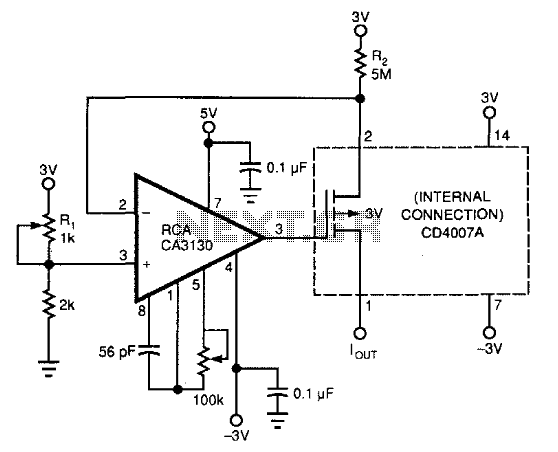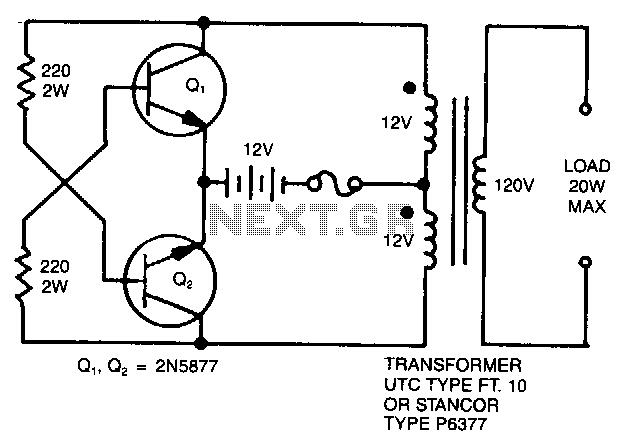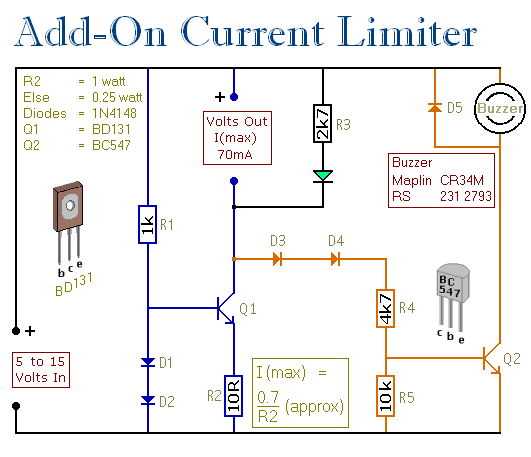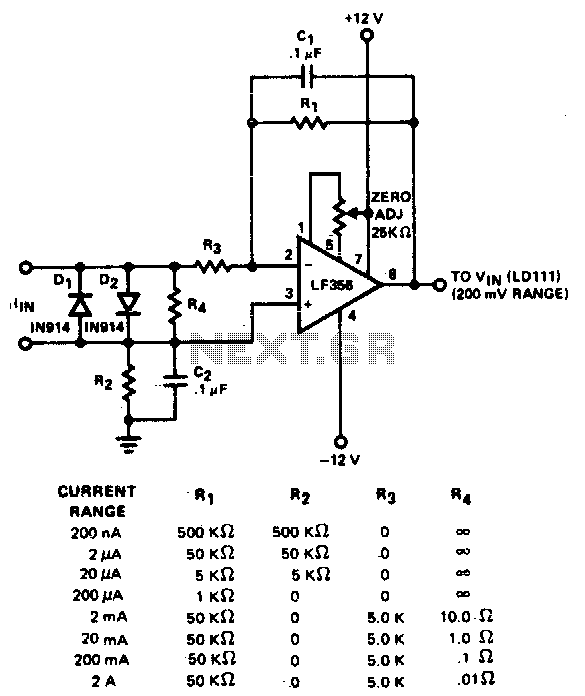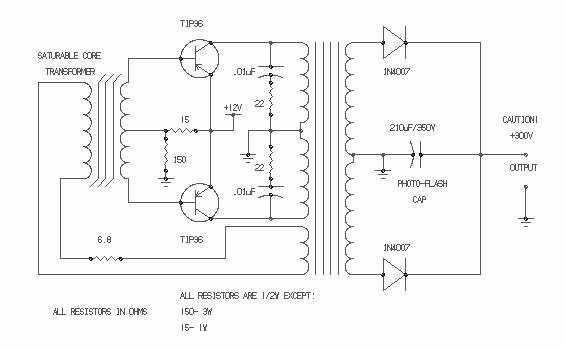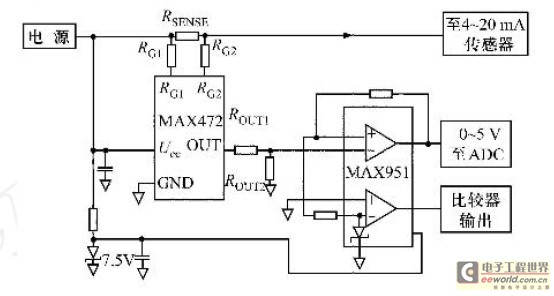
Bilateral current source

The circuit will produce the current relationship to within 2% using 1% values for R1 through R5. This includes variations in R1 from 100 ohms to 2000 ohms. The use of large resistors for R1 through R4 minimizes the error due to R1 variations. The large resistors are feasible due to the excellent input bias current performance of the OP-08.
The described circuit employs a precision current source configuration, utilizing resistors R1 through R5 to establish a stable output current that maintains a high degree of accuracy. The circuit is designed to achieve a current relationship accuracy within 2%, even when the resistance of R1 varies between 100 ohms and 2000 ohms. This is particularly important in applications requiring precise current control, such as in analog signal processing or sensor interfacing.
The choice of resistor values is critical; using 1% tolerance resistors for R1 through R5 ensures minimal deviation in the output current under varying conditions. The resistors R1 through R4 are selected to be of relatively high resistance values, which serves to reduce the impact of any variations in R1 on the overall circuit performance. This design consideration is crucial, as it allows the circuit to mitigate errors that could arise from fluctuations in the resistance values, thereby enhancing the reliability of the current output.
The OP-08 operational amplifier is utilized in this circuit due to its superior input bias current performance. This characteristic allows the circuit to maintain accuracy even when utilizing large resistors, as high input bias currents can introduce significant errors in low-current applications. The OP-08's low input bias current helps to preserve the integrity of the current relationship by minimizing the voltage drop across the resistors, which could otherwise lead to inaccuracies.
Overall, the combination of precision resistors and the OP-08 operational amplifier results in a robust circuit capable of delivering a consistent and accurate current output, making it suitable for various electronic applications where precision is paramount.The circuit will produce the current relationship to within 2% using 1% values for Rl through R5. This includes variations in Rl from 100 ohm to 2000 ohm. The use of large resistors for Rl through R4 minimizes the error due to Rl variations The large resistors are possible because of the excellent input bias current performance of the OP-08,.
The described circuit employs a precision current source configuration, utilizing resistors R1 through R5 to establish a stable output current that maintains a high degree of accuracy. The circuit is designed to achieve a current relationship accuracy within 2%, even when the resistance of R1 varies between 100 ohms and 2000 ohms. This is particularly important in applications requiring precise current control, such as in analog signal processing or sensor interfacing.
The choice of resistor values is critical; using 1% tolerance resistors for R1 through R5 ensures minimal deviation in the output current under varying conditions. The resistors R1 through R4 are selected to be of relatively high resistance values, which serves to reduce the impact of any variations in R1 on the overall circuit performance. This design consideration is crucial, as it allows the circuit to mitigate errors that could arise from fluctuations in the resistance values, thereby enhancing the reliability of the current output.
The OP-08 operational amplifier is utilized in this circuit due to its superior input bias current performance. This characteristic allows the circuit to maintain accuracy even when utilizing large resistors, as high input bias currents can introduce significant errors in low-current applications. The OP-08's low input bias current helps to preserve the integrity of the current relationship by minimizing the voltage drop across the resistors, which could otherwise lead to inaccuracies.
Overall, the combination of precision resistors and the OP-08 operational amplifier results in a robust circuit capable of delivering a consistent and accurate current output, making it suitable for various electronic applications where precision is paramount.The circuit will produce the current relationship to within 2% using 1% values for Rl through R5. This includes variations in Rl from 100 ohm to 2000 ohm. The use of large resistors for Rl through R4 minimizes the error due to Rl variations The large resistors are possible because of the excellent input bias current performance of the OP-08,.
